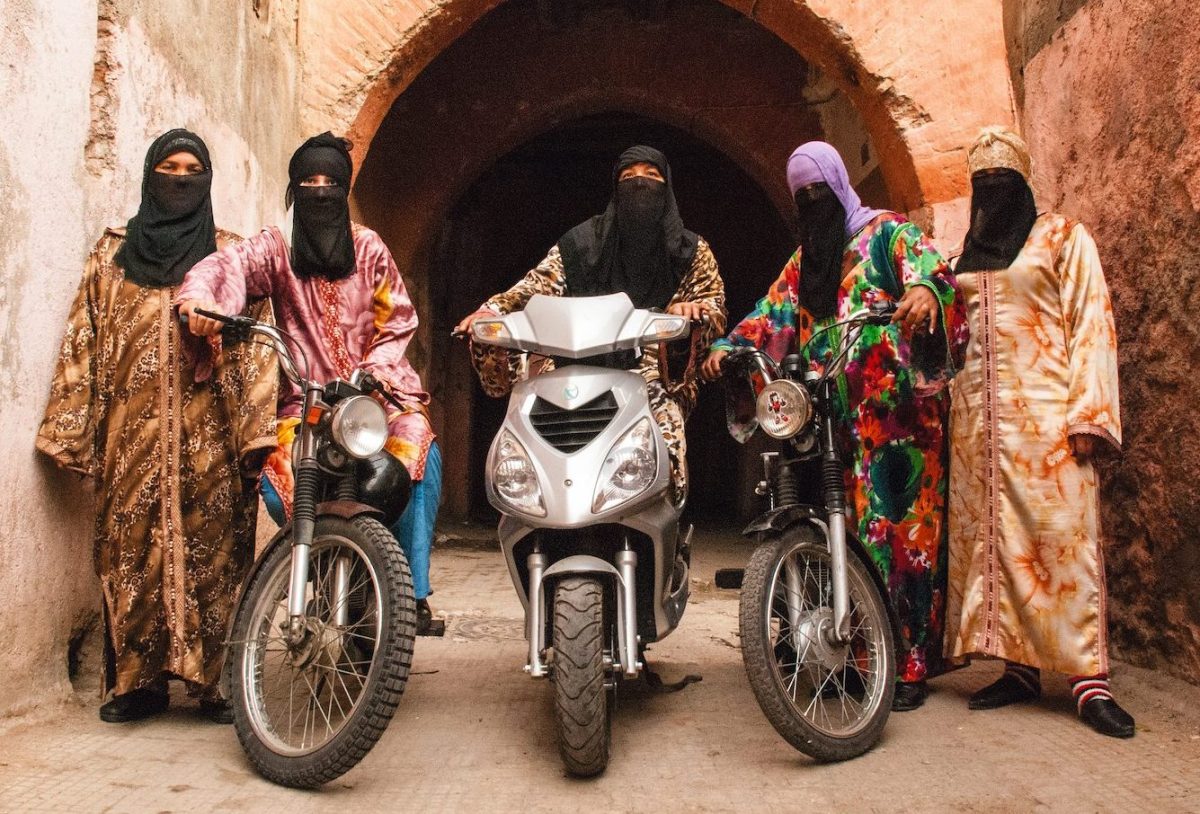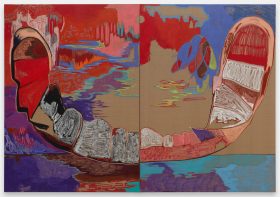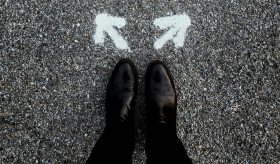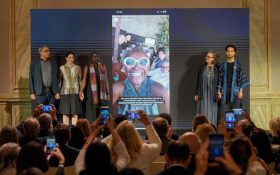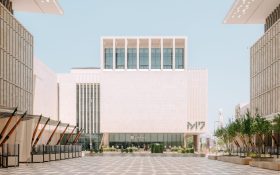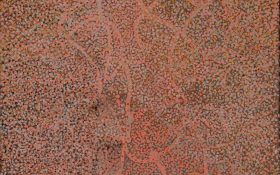One of the highlights of this year’s Sydney Design Week, was the last keynote in its program – a conversation held between Moroccan-British artist Hassan Hajjaj and Jane Duru, associate creative director at R/GA Australia, who is also British-born with a Nigerian cultural heritage.
Hajjaj discussed his maximalist approach to his photographic practice, which sits at the intersection of fashion, performance and cultural identity.
What is exciting about his practice is a new lens he brings to North African traditions, and it’s bubbling up in Western popular culture. In curatorial circles there has been a recent rise in interest in contemporary art from Africa, and Hajjaj has led in that space for some time, through his expanded photographs and projects.
For example, he is just as happy to photograph veiled women on motorcycles in Marrakesh as he is his own diasporic community of friends in London or Billie Eilish for Vogue, which he did in 2020, ensuring she dressed in his own clothing label, Andy Wahloo.
His work is held in the collections of the Brooklyn Museum (US), the British Museum (UK), the Guggenheim Abu Dhabi (UAE) and, most recently, in Australia, where he styled the NGV’s Gallery kitchen into a Moroccan tea house for the NGV Triennial.
Jane Duru is also no stranger to working with brands, having led creative work with Nike, Google and MECCA. This is how their conversation went.
Discussed in this article:
This conversation is an abridged version of the keynote that was presented at Parramatta Town Hall on 19 September. The event was part of Sydney Design Week (13-19 September 2024), and was hosted by Powerhouse Museum.
Coming from where?
Jane Duru: I’d love to know how your shifting identity between Morocco, London – and all the other places you visit – has influenced your work?
Hassan Hajjaj: Born in Morocco, and moving to London at the age of 13, opened up my eyes to the culture in the UK. I arrived in 1973, so it was a different world to now. The friends I grew up with were mainly from a similar background, so we stuck together because we were either the first generation coming in or the first generation born there.
I look at England as very grey, you know, and I’m coming from a technicolor country. Hassan Hajjaj
This really gave me a point of view about where I’m coming from, and having all these influences – from music to art, food and films – gave me a different way of looking at things, about myself, about my culture and the UK.
We came out of school probably with zero qualifications. So we had to really do it [ourselves] – culture [that is]. They weren’t places we could go to; there wasn’t the type of music we listened to. So I started a brand called RAP – real artistic people – in 1984, and I was designing for my friends and myself, that now I suppose you would call streetwear. So it was a kind of a new do it yourself culture, and that was the beginning of my journey.
What drew you to portraiture as an art form?
In the 1980s, I was curious about having all these amazing people around me. I just started taking portraits with a Polaroid, and then moved on to Pentax camera. I think the idea was just to document my friends that had a similar journey, and to capture this kind of identity, of togetherness.
This piece of yours (illustrated above) – Kesh Angels – how did this series come about?
Kesh Angels started probably in the 1990s. I’ve taken the word from Hell’s Angels, and I played with what could be considered an iconic name, and [Kesh] is short for Marrakech.
I started studying how women would use the bike, and would sit on it, and pose on it. It almost looks odd, but in reality, it’s happening. So this was an idea, of having a bunch of women with something in the background that you know is an Arabic country, and trying to give it like a cinematic image.
The image taken [is similar to those] I’m growing up with from the cinema, where you had the film poster. Sometimes you can’t go inside to see the film, so you look at that picture and imagine the film yourself. I’m playing with this idea. It was really the idea of letting the person make their own story.
Brands, fakes and success
There’s often the attempt by brands to control the narrative. How do you balance the intention with the work and the way it’s interpreted?
I’m coming from … the 1980s, from a mainly working-class background, and to own something that’s branded around that time, was a big thing. It meant you have made it. But the problem was counterfeits came in, where we took Chanel No 5 and put out a T-shirt, or Gucci. It was everywhere.
As I started shooting more and more, I was buying counterfeits, and I knew if I used Louis Vuitton on the woman, it could look uncomfortable or wrong. So, I played with that idea to bring people to look at the images. And I found by using brands – because most of the time people see Coca-Cola or Louis Vuitton or Gucci – you have their attention and, hopefully then, they can look at the work more deeply.
You often touch on questions around authenticity. What draws you to keep exploring that?
In the end, it has to be the people I’m taking the pictures of, and really trying to say something. I’m also feeling like I’m documenting what’s around me – this is really important for me. So, I’m trying to give that spirit of the person.
Tell us a bit about your work with Louis Vuitton?
Just before my opening around 2007 in Dubai, one of the newspapers came up, and I had the front cover. So immediately Louis Vuitton got to the gallery, and they put a subpoena on us. We still showed the work, and nothing happened. And then in 2010 Art Quarterly, a magazine in UK, I had a front cover – a woman with a veil and Louis Vuitton stuff. Again, a lawyer got in touch with me, but it was kind of positive. So I went to Paris, to Louis Vuitton, and they put me in a room with a long table full of all the counterfeits you could think of, that they collected. We had the conversation, and it was trying to see if we could work together.
In the end, they want me to stop sharing all my work, and do some projects with them. But then I thought, ‘I don’t want to become a sort of fashion photographer.’ I decided to stick to what I’m doing, and then came a movie idea.
They came and saw it, but they realised [we were] doing more artistic stuff than trying to sell their products. I think before that they were bit worried, and were trying to really protect their brand. They probably let it go because now it’s hard to stop it everywhere.
Styling his subjects
Your work’s been called hugely vibrant, and this talk is called Maximalist Identities. Where does that aesthetic come from?
[I’m] trying to fuse all these ideas to the image, to really give something beyond the pretty picture or lots of colours. I play around with film, clashing the colours together, so that everything stands out from what’s around the frame. But the main thing is, not to take away from the person. I like the person with all these sorts of mashed-up colours and textiles…
How do you choose your subjects? And do you style them?
I’m not a technical designer, where I would buy the fabric and take it to my tailor. In my studio – my home – I have hundreds of outfits. I have tons of backdrops, all bits ready to use.
I’ll try to work out what I could present to them, to see if they’re comfortable enough to wear it. Then I work out the backdrop, and go from there. So there’s a process happening from beginning to end, but it helps to have stuff made ready.
You’ve spoken about being drawn to 1960s African portraiture. What is it about that work that draws you in so much?
Obviously, a big influence is from the old studio photographers. They were photographers that weren’t taking pictures for art. They were taking pictures in the studio because there weren’t cameras. I feel I’m one of the next generation taking the pictures [in that way].
I remember one taken of me and my family in Morocco, when I was younger. You had your best on, and I remember the lighting, the backdrops. When I started trying to show my work, I was thinking, ‘You can’t compete with that, but what can my generation say?’
These images become more important as time went by – they’re looked at as a documentary period. So this [idea] came in shooting my friends, friends of friends, and trying to put something a little bit more contemporary using more colour.
Read: Nearly 5 billion photos are taken daily – so here’s how to stand out
Rethinking the picture frame

Around your frames are real cans. Why do you rely on them as a repeating motive?
The whole idea actually started with the project Graffix from the Souq, which was really a language of products, Arabic products mainly – again, going back to a time when I was growing up in London.
Photoshop was new at that time, so we played [with] Arab brands in shops and I printed them on canvas. It was almost more decorative than artistic. So, when I decided to show my photographs, I wanted to bridge that by using real cans around the frame.
[At the time] it was misunderstood – it was still a little bit snobbish about photography [being regarded as] contemporary art. I wanted to challenge myself to have the frame to be part of the work, and the reason for this was, looking at all the museums over the years and looking all these beautiful paintings from the 1700s to the 1800s, they have these beautiful frames around them. That’s part of it, so I took this idea as part of my work.
The cans are really an expression of the popular way we’re living, and also that repeated mosaic we have in our country. I found that the cans can communicate more than my images, because a Coca-Cola can in Arabic, for example, can break barriers between culture, because they see something familiar.
How important is it to you to make work that feels approachable and accessible?
It is really important. I was one of those kids growing up in council flats. We hated the museums. We wouldn’t be comfortable to walk into the gallery. When I was younger [I didn’t want to be] called an artist. I felt, if I do show, then I’m having my friends hanging on the walls. I wanted to break those barriers and show the work to people like myself.
Read: So you want my arts job: Photography Curator
Come have tea with me
You also design clothes and interiors. Could you talk about your Jajjah tea room project, and how it came about?
Jajjah (Hajjaj backwards) is actually based in the industrial area of Marrakech. My partner owns a tea company [Amine El Baroudi, a tea maker for Harrods and Fortnum & Mason]. He makes cans with the tea, so I asked if I can make my own designs for my friends.
So I decided to do tea that comes with music. They have an app (a QR code on the packaging) so you can do tea and listen. I invited some [emerging] Moroccan photographers to work on the packaging, to promote photographers as the artists, and I wanted to bring something to the table.
And then we started the gallery, a boutique with products, music and traditional Moroccan food. This was my COVID project, like sourdough testing, but it was making a piece of work. I have a team that I work with, obviously graphic designers, metal makers. When I finished the whole project, I felt kind of content and happy.
Hajjaj’s Riad Yima – a boutique, tea room and gallery located amid the labyrinthine streets of the Medina – also has an outpost in Shoreditch, London, called Larache Shop).
Sticking it out and new lens on African art
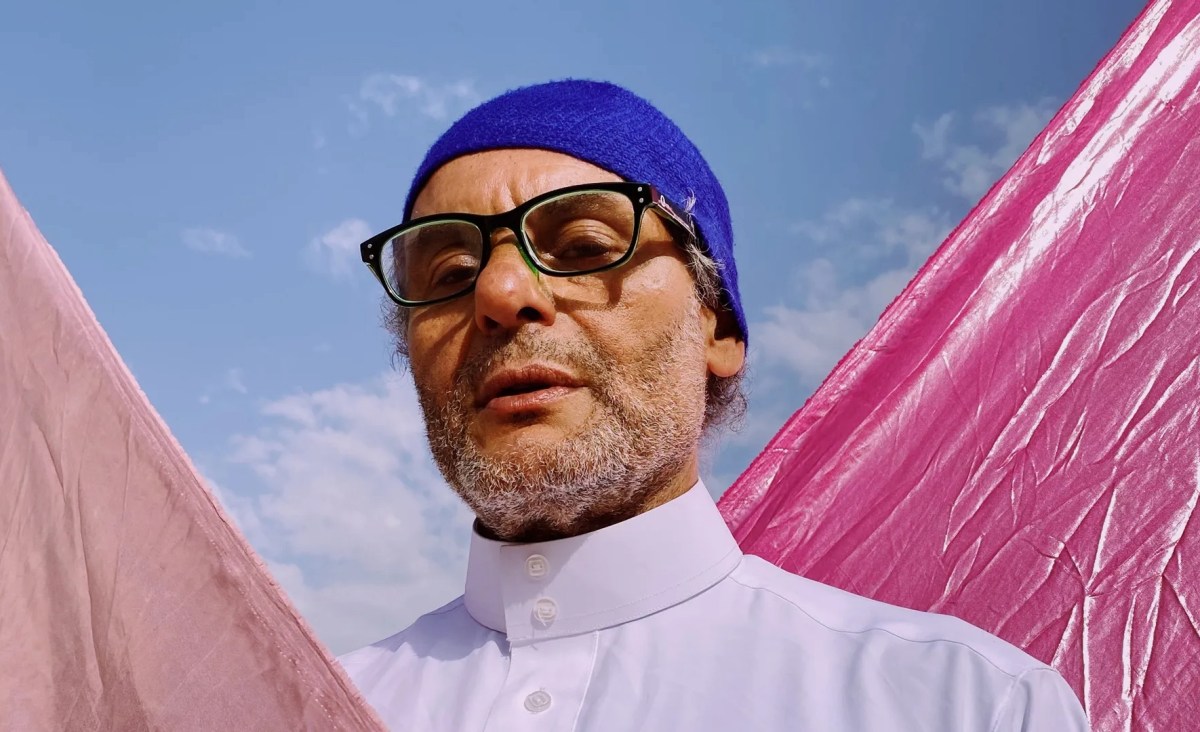
How do you navigate between all the different mediums your work exists across?
I’ve been doing this for about 35 years. It was a process of doing, doing, doing – of working hard – so now there’s a flow. The best thing, I would say, that really taught me something years ago, was listening to an interview with Red Hot Chili Peppers, when they had their big album in the late 90s. They were doing an interview, and said, ‘We’ve been on the road for 18 years; we [weren’t] just discovered. It’s really [about] putting the work in, and things start to make sense.
I think sometimes, if an artist is just painting, you can get that mental block that you have to stop for a bit. But, because I’m doing so many things, there’s always something. But, I always say, once I get to the point when I’m not enjoying it, I will stop. But I’ve not stopped yet.
How have you managed to keep true to yourself, and your identity, as you’ve navigated through all these different worlds?
In the beginning, I was doing everything myself – I would find a space, convince the person to give me a week, hang [the works] myself, call on friends.
I have to speak about Rosa Issa, who’s a big curator in the UK. She was the first to really break Arab artists in museums. And Simon Njami, another African curator who did Africa Remix at the Hayward Gallery, and took it to Pompidou and Japan. These two people were quite important in my journey.
Sitting around a dinner table with all these artist people, it was very new for me. And I didn’t have that education. So it was a learning process. Doing talks, I was very uncomfortable, and would get tongue twisted. And then I’d realised I didn’t want to be the kind of artist [who was] at all the openings and parties. I’d rather be making a piece of work – that’s my job.
So I try to stay grounded with people I grew up with. But as you get busy, you travel more, sometimes you end up in this world of more art people. There’s the snobbery part, there’s the socialising part, there’s the blah blah part. And you start to learn how to navigate through it.
People are enjoying the work, and I’m getting to survive on it – you know, longevity. That’s the other half of things, because everything’s very fast, and so much stuff is happening. I started before social media, so it meant, if you did a show and 200 people came in a month, there were only 200 people who saw your work. Now that social media has come into it [this has] pushed my work even more [so] people [can] find out about it.
Read: A giant in photography falls – for now
Working with celebrities or working with friends
Let’s talk about the Billie Eilish; tell us how that came about?
I was in Dubai, in the middle of a festival doing the project and I got this email saying, ‘Shoot this girl. Billie.’ I didn’t know she was big. When I Googled her, then I listened to her music, I connected the name at that point. They said they’re choosing four artists to do two covers for Vogue.
Obviously with Vogue, I was a little bit nervous, and I thought the main thing was to make her happy, to make Vogue happy, and make myself happy – if that makes a Venn diagram, great.
They obviously have a big team of stylists. I was amazed. They had hundreds of shoes and stuff like that. And, bless her, she was just about to turn 18. But when I finished shooting all the brands, I asked if she wouldn’t mind dressing up in my designs as well. She reminded me almost of a film star from the 1960s. I felt like she was like an old spirit.
If you think of celebrities, they’ve been shot by the best photographers thousands of times. I can’t compete with that. All I try to do is work in my world, and most of the time the approach is because they saw my work.
So it’s trying to find that balance between yourself and them, but at the same time, I’m always worried about celebrities’ pictures, because I don’t want them to take away from all the pictures I’ve taken of my friends.
I suppose being an artist is the journey. It’s not where you choose [it to] take you, because it’s part of your lifestyle. So it doesn’t mean trying to just make money or make it big stuff.
And then even coming here, doing this project, to be able to meet new people, to understand Sydney, West Sydney, understanding the culture and the places, and this is the best part about being an artist, is having these kinds of moments.
